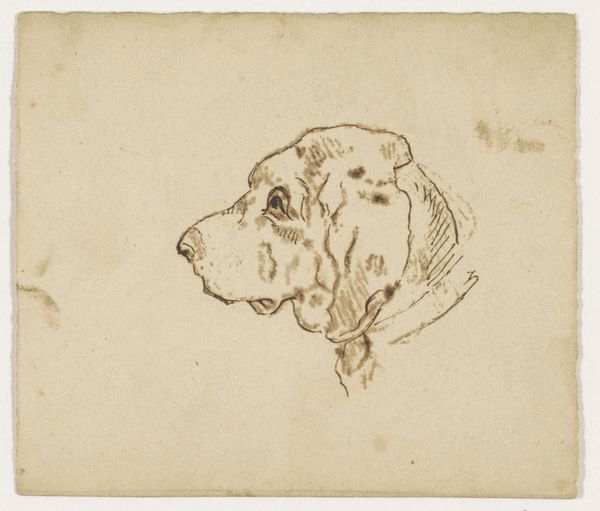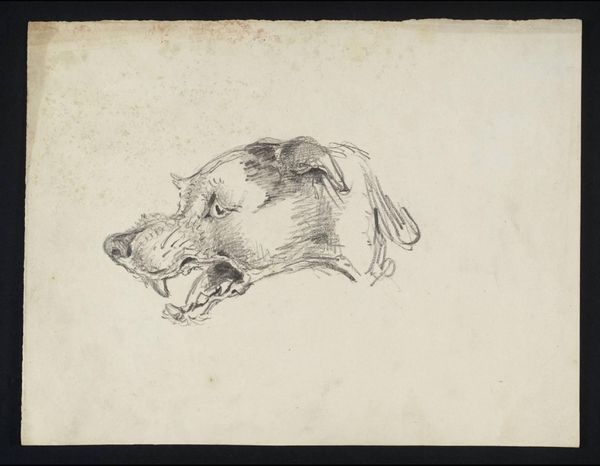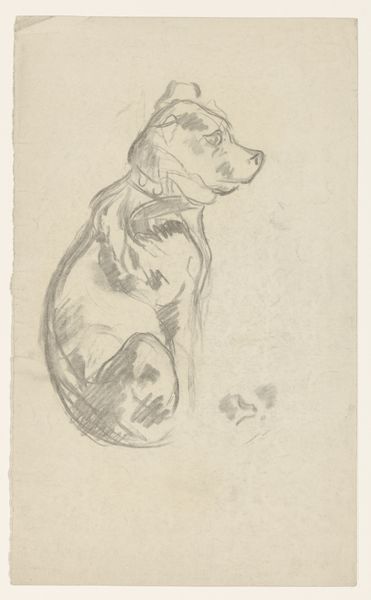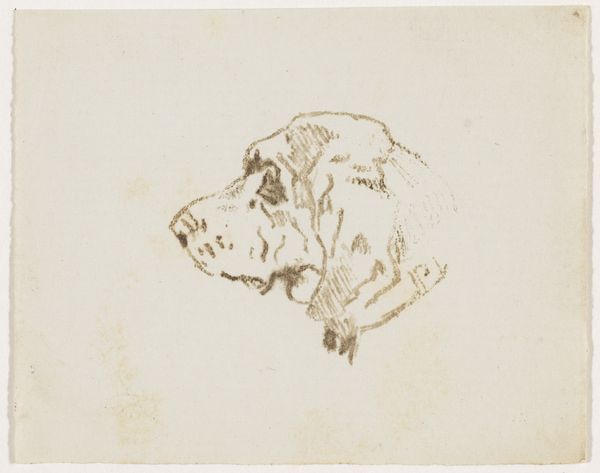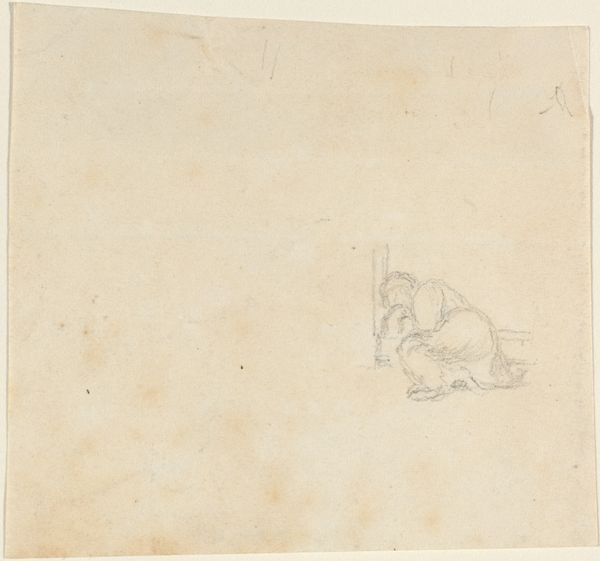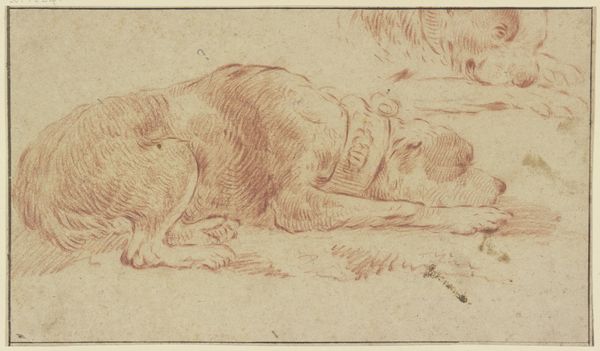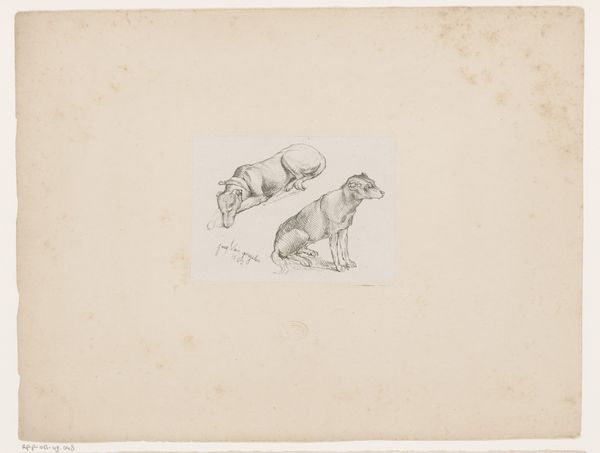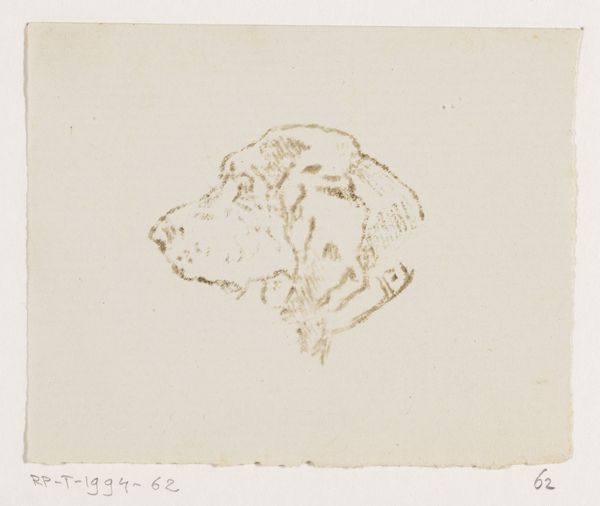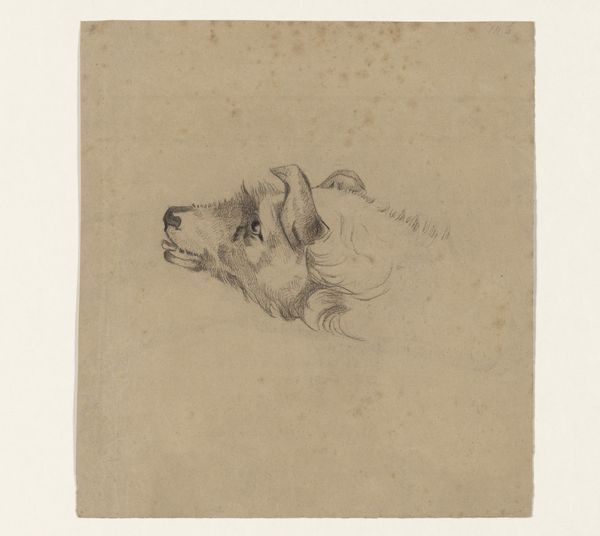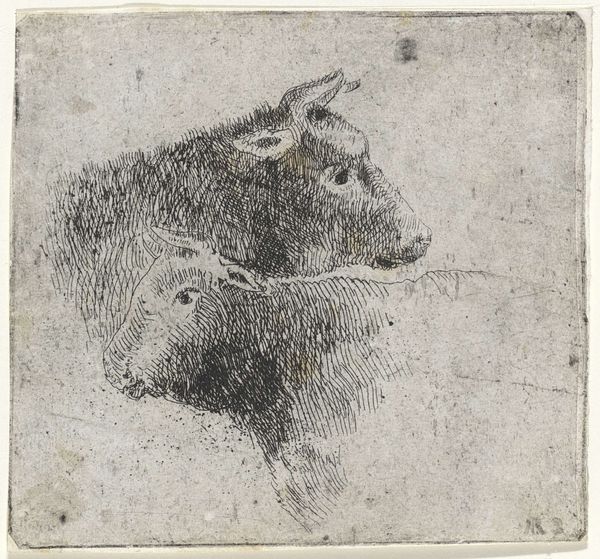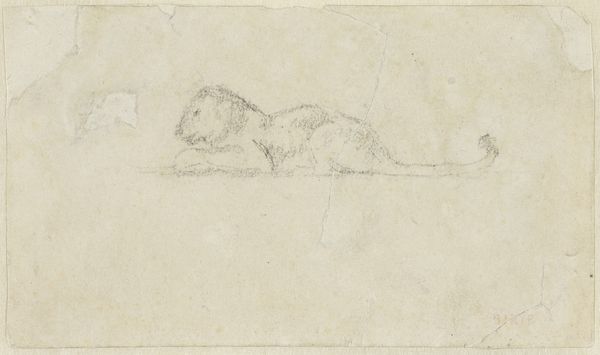
drawing, pencil
#
portrait
#
drawing
#
animal
#
pencil
Dimensions: 140 mm (height) x 110 mm (width) (bladmaal)
Constantin Hansen made this study of a dog's head with graphite on paper. The physical properties of graphite - its softness, its ability to leave a mark with the slightest pressure - is ideal for capturing fleeting impressions, especially for sketching. You see this in the rapid, searching lines, the hatching that defines the dog's form. Paper offers a receptive ground. Its surface texture influences how the graphite adheres, creating subtle variations in tone and depth. But the apparent simplicity of drawing belies its social significance. Drawing was a fundamental skill for artists of Hansen’s era, a process of observation, and a means to study form and light. This wasn't just about technical skill. It was about understanding the natural world, and one’s place within it, through careful, focused work. In this context, the artist's hand becomes a tool for mediating between the world and the artistic imagination. So, next time you see a drawing, consider not just what is depicted, but the act of making itself. What is revealed about the world, and the artist’s relationship to it?
Comments
No comments
Be the first to comment and join the conversation on the ultimate creative platform.
